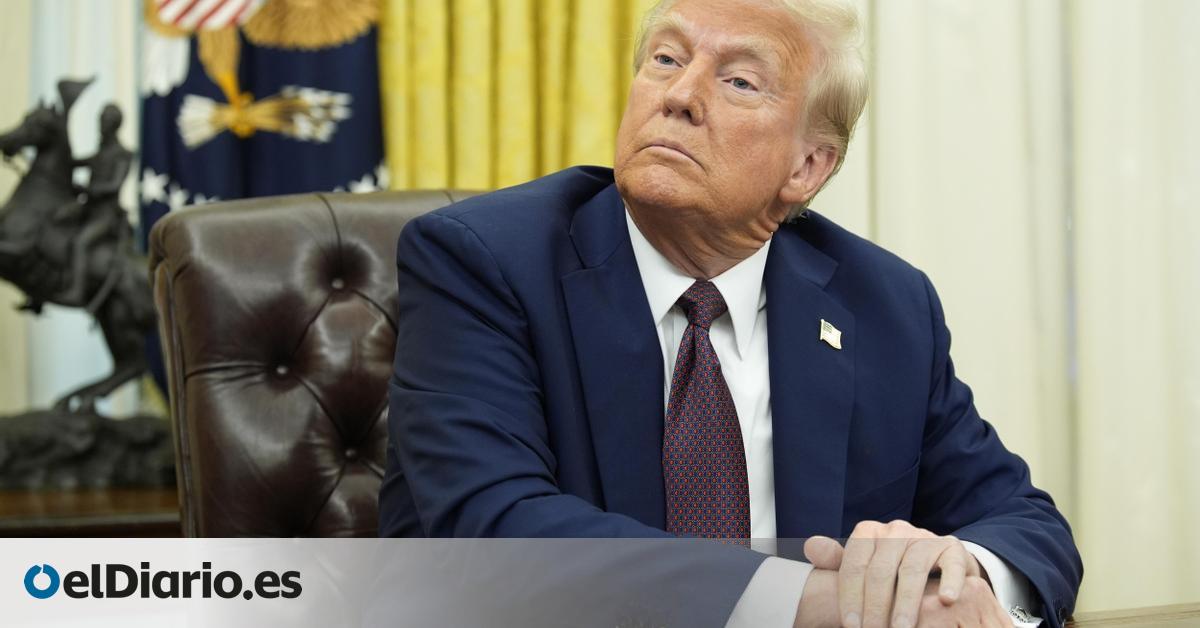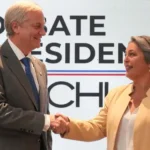
New climbing in the commercial war that Donald Trump has declared to the rest of the world. The US President has signed a new executive order to apply “reciprocal” tariffs with the rest of the countries. It was a measure that I had already announced during the weekend, together with the promise of 25% tariffs on steel and aluminum imports. The tariffs are approved but are not yet fixed and will not take effect immediately.
“We want a level playing field,” said Trump this Thursday while signing the order. The document – which has not yet been published – orders the administration to prepare a comprehensive plan to address what the White House describes as “long -term imbalances” in the global economy.
The memorandum orders that an answer to all tariffs on American products be proposed, including taxes that are “unfair, discriminatory or extraterritorial” – where European VAT would be included – those costs on US business, workers and consumers operating in other countries and those “policies and practices that make exchange rates deviate from their market value.” Leave the door open to review other practices that the Secretaries of Treasury and Commerce consider.
In total there is 180 days to present the measures that are created necessary to redirect the situation. The Secretary of Commerce, Howard Lutnick, has advanced that the first tariffs could arrive on April 1.
The theory of these reciprocal tariffs is that the United States would apply the same levies to the imported goods from a certain country that this country was applying to imports from the US. But, in practice, this type of taxes can be much more complex than Trump raises, especially if you think about the EU market.
Trump has assured that in the coming weeks the advisors of his government will meet to decide what measures to take regarding cars, pharmaceutical products, chips and other goods. “They have been taking advantage of us for years and years,” he said about other countries. “They have charged us and we have not charged them. And it’s time to be reciprocal, ”he added.
In statements from the Oval Office, Trump has assured that he will be more than happy to have conversations with the other countries about lowering tariffs if they do the same. Trump’s comment, together with the fact that the encumbrances have not yet entered into force, makes it clear that he intends to use them again as a gun of diplomatic pressure.
The president has also put the EU in the focus, ensuring that the European VAT will not continue to “tolerate”, which according to “triples” tariffs in US exports. Trump has also said that there are other measures in the EU that “damage” companies such as “Apple”. The EU Court of Justice ruled at the time that the iPhone manufacturer had to pay 13,000 million euros for late taxes to Ireland.
On previous occasions, the deputy chief of Trump’s Cabinet, Stephen Miller, had suggested that tariff reciprocity with the EU would also have to take into account the VAT that is then applied to the imported products from the United States. Miller argues that the lien suffered by US imports is not only that they pay when entering the European market, but also increases once VAT is applied. For example, it considers that the impact of total tariffs and VAT on US car exports to the EU is approximately 30%, so it would be only “just” to collect, in turn, another 30% to European exports to exports To the US.
One of the European markets that could quickly notice the effects of these reciprocal tariffs is the car. While the US applies a 2.5% tariff to imports of European sedan and SUV cars, the EU gravels with 10% vehicles imported from the United States. To apply the logic of reciprocity, the tax to European cars would go from 2.5% to 10%. Or, if Trump decides to follow Miller’s advice, the increase would be 2.5% to 30%. Because of the criticisms that he has made about VAT, it seems that this last option will be the one that the Republican will choose.
On several occasions, Trump had already threatened to impose tariffs on Europe under the pretext of reciprocity. In his speech at Davos, the president regretted that the European Union “treats us unfairly and very badly.”
In the midst of the tariff war, many of the rates with which Trump threatened other countries have not applied. 25% tariffs against Mexico and Canada were paralyzed just before they went into force thanks to concessions by both countries. The tariffs with which the Republican threatened the Colombian president Gustavo Petro either materialized.
At the moment only 25% tariffs are underway for aluminum and steel – although the president applies exceptions as he already did in his first mandate – and the tax of an additional 10% on Chinese imports. The Asian giant has responded to this with 15% rates on coal and liquefied natural gas, and 10% on crude oil, agricultural machinery and some vehicles.
The White House explained Wednesday morning that reciprocal tariffs were one of the president’s great bets. “It is the golden rule, that we all learned at school: treat others as you want them to treat you. Too many countries in the world have been scamming to the United States of America for too long, and that is why the president believes that this will be a great policy that will benefit US workers and improve our national security, ”said Press Secretary Karoline Leavitt .
Source: www.eldiario.es

